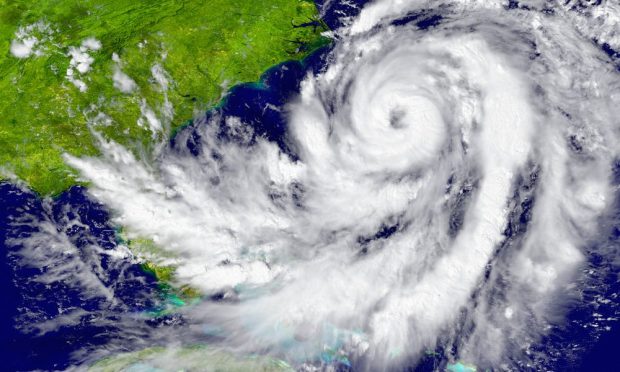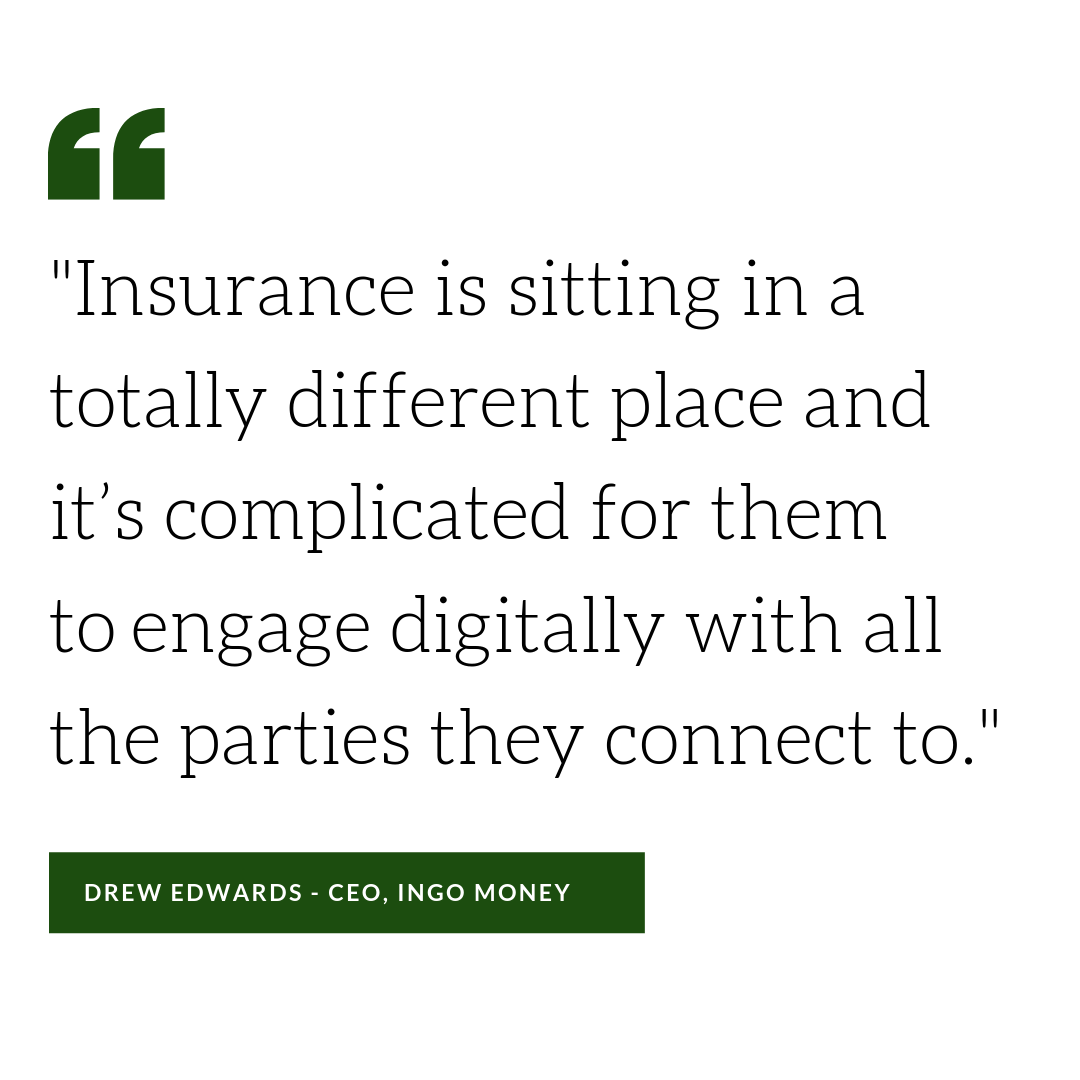Florence’s Aftermath: Have Insurance Claims Payments Evolved Since Hurricanes Harvey And Irma?

Exactly one year before Hurricane Florence began her reign of terror in the Carolinas, Karen Webster interviewed’s Ingo Money CEO Drew Edwards and Visa’s senior vice president and head of U.S. Push Payments Cecilia Frew on how last year’s twin disasters, Hurricanes Harvey and Irma, were pushing insurance claims payments to change.
At that time, Edwards and Frew agreed that insurance payments needed to change because relying on paper checks in the face of an emergency is a bad idea. Cumbersome, hard to deliver, easily stolen, expensive and slow — they are exactly the wrong solution for a consumer in the midst of an emergency of any kind.
“This is really a customer service issue. At some point, please don’t mail me a check to a mailbox that isn’t there anymore because it was washed out to sea,” Frew said, noting that sending a check can cost an insurance company anywhere from $3 to $10 per person and create lots of delay in getting checks to the consumer.
Checking back in a year later, Webster had some direct questions for Edwards: Did insurance payments fundamentally change? Were Harvey and Irma the proverbial red line that moved the insurance industry inexorably toward digitized, instant push payments for consumers making claims during a hurricane or other natural disaster? Will those rebuilding from Florence have a fundamentally better experience?
It’s a question, Edwards noted, that is hard to answer because there is no definitive answer. It has changed, and it hasn’t, he said, even though the insurance industry has more fully embraced the idea of using push payments as a tool for settling property and casualty claims. That is particularly apparent, he added, in areas like auto and casualty.
Sadly, he said, progress might not be as noticeable with the inevitable Florence rebuild. That’s because mass emergency disaster events are wrapped around a host of claims complexities that are bigger than just making faster payments to policyholders.
The Front-End Challenge
Edwards emphasized that insurance, by definition, is an urgent event on the payout side and that 100 percent of insurance companies are focused on digitizing that loss to payout process. However, insurance is also one of the oldest and most-regulated industries in the country, and the kinds of changes needed to create digital relationships with its customers aren’t as simple as API integrations.
 “Insurance is a highly complex, established smokestack industry, and it’s not easy to just inject itself into the digital economy alongside players like Lyft and Airbnb that were designed for the new economy,” Edwards said. “Insurance is sitting in a totally different place and it’s complicated for them to engage digitally with all the parties they connect to.”
“Insurance is a highly complex, established smokestack industry, and it’s not easy to just inject itself into the digital economy alongside players like Lyft and Airbnb that were designed for the new economy,” Edwards said. “Insurance is sitting in a totally different place and it’s complicated for them to engage digitally with all the parties they connect to.”
Ingo can take much of the pain out of making the payment itself, he noted, by enabling companies to set payment instructions on who to pay, how much and when. In some sense, though, that’s the easy part. There’s a lot of complexity that goes into the process of deciding how much that payment should be — high-touch, high-friction visits with adjusters, and calculations to estimate and validate the loss.
Progress is being made, as evidenced by the Safelight auto claims experience, where customers can initiate a claim on mobile, upload photos of their damaged car and have a payment processed to them that same day.
However, Edwards noted, those automated, digital front-end initiations get a lot more complex when insurance companies are addressing disaster situations like hurricanes. A claim that a car was rear-ended, or even that a basement was flooded from a pipe burst, can be supported by a photo. Proving, though, that one’s house or car was washed out to sea, or that mold from the moisture has made large portions of a home unsafe to occupy, are much harder to do with an uploaded photo.
“The universal standard — what I think the industry is building toward within the next few years — is that when a customer has a problem, they can digitally access their insurer and tell them about it, and govern the entire process on digital through getting their money,” Edwards said. “But it’s going to take some building.”
He also told Webster that it won’t just be building the front-end touchpoints for customers to make and verify claims. There’s a lot of friction on the back-end in actually pushing those funds into accounts, particularly when they are large.
Fighting The Hidden Friction
When a customer’s basement floods and they need an $8,000 payment pushed to them, Edwards told Webster, the payment rails are pretty well-suited to get those funds into the receiver’s bank account. However, make that a $25,000, $50,000 or even $250,000 claim, and things get a lot more complicated for all parties involved.
The limits as allowed by the card networks have gone up a lot, he noted, but just because networks allow a $50,000 push payment to ride over their rails, that doesn’t mean those payments reliably end up in the bank accounts of policyholders. A $5,000 payment will be accepted 99.4 percent of the time, but a $50,000 payment will bounce back about half the time. That’s because bank systems are set up to detect and stop payments that seem, on the surface, suspicious.
For an Uber driver whose weekly deposit is about $1,200, a sudden request for a $30,000 deposit into their account will be stopped, even though the payment is a legitimate claims payment for a car that was totaled in the floods brought about by a hurricane. Edwards said this is the expected friction that comes from taking a payment network that was built to take money from consumers and running it in reverse to put funds back into the consumer’s bank account.
“It’s getting better, but it’s going to happen from the bottom up from small claims,” Edwards told Webster. “We can reliably push payments under $10,000 into a consumer’s bank account, but funds to replace a whole house or even a whole car are more complicated, more friction-filled.”
It will change, particularly as banks are learning to look at insurance Merchant Category Codes (MCCs) and realize that larger-than-average transactions are a norm, not a bug. It’s not going to be an easy changeover — as there are a lot of banks and insurance companies in the U.S. — and there are a lot of experiences that need to be redesigned by players with heavy legacy systems to supplant with better digital systems.
However, he noted, the wheels are and have been turning for over a year, and the progress is moving forward.
“It’s not going to be fast,” he said, “but I think you are going to see it moving undeniably forward in the next year [or] two.”
